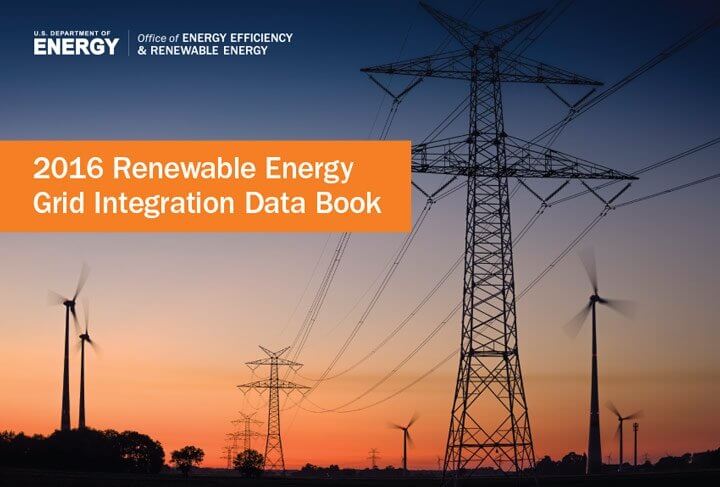The Office of Energy Efficiency and Renewable Energy has released the Renewable Energy Grid Integration Data Book, which sheds some light on questions about how power system operators handle the uncertainty that comes with variable renewable energy (VRE) sources of power. VRE sources — those that vary in nature, such as wind and solar — are the fastest growing sources of electrical capacity in the United States.

Have you ever driven by a still wind turbine on a sunny day and wondered, “What happens if it’s not windy? How does that generate electricity?” The EERE answers those questions and others in its latest data book, available for download here.
The new data book tracks how much VRE power is going onto the grid and highlights the experiences to date. For example, in 2016, utility-scale VRE provided almost half of electric load during select hours in some market regions.
Despite these records, even more VRE power was available that could not be put to work. At times, there is not enough transmission capacity to bring VRE power to electricity consumers. And, there are times when non-VRE types of generation cannot be ramped down or are required for reliability needs.
When these constraints are binding, power system operators curtail VRE power (i.e., they reduce the amount of available electricity from VRE put onto the grid). Electricity curtailed is electricity not sold, so too much curtailment can hurt the economic viability of VRE generation sources. In some market regions, over 4% of utility-scale VRE had to be curtailed during 2016.
As more VRE goes onto the grid, forecasting the amount of VRE power available becomes critical. Day-ahead wind forecasting has improved significantly. Average hourly over-prediction forecast errors of wind (where actual generation was less than the day-ahead market forecast) were as low as 3.7% in some market regions, an almost 60% improvement in just two years.
Grid operators cannot control the weather, but existing and new technology and market solutions can help minimize VRE curtailment. Wholesale electricity markets across the country continue to evolve to address the opportunities and challenges of VRE.
Read the 2016 Renewable Energy Grid Integration Data Book to learn more about VRE power and discover other report findings.
Filed Under: News




